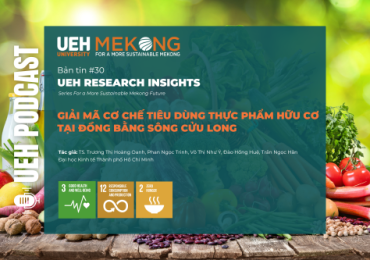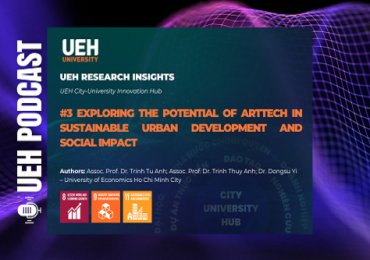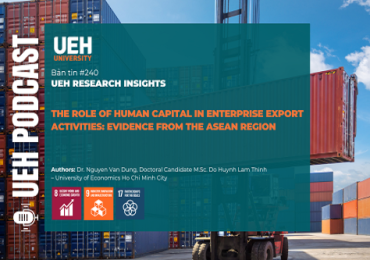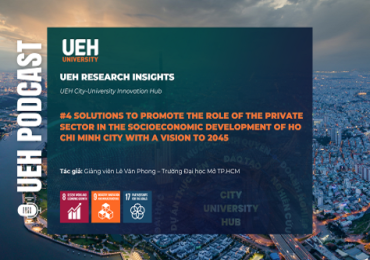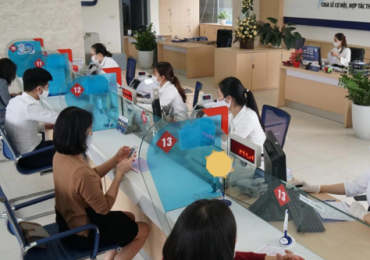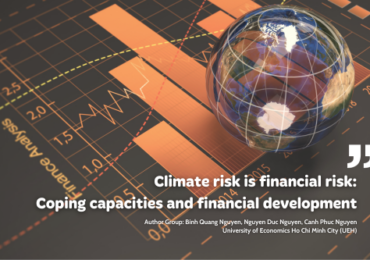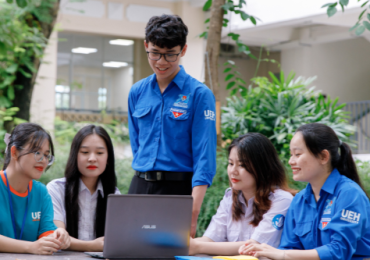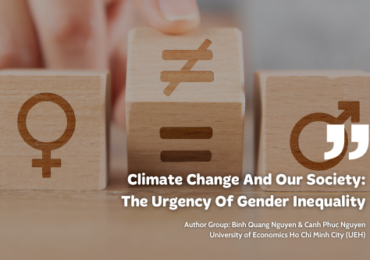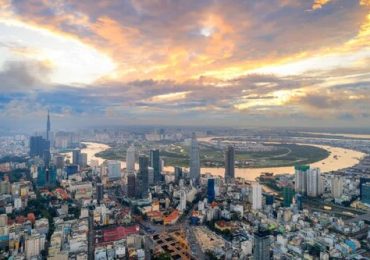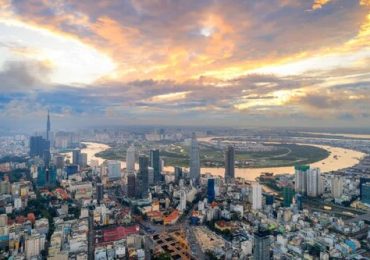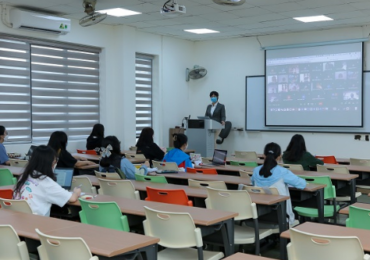[Research Contribution] Building Sustainable Cities: Inspiring Awareness and Action Among Urban Residents in Vietnam
10 August, 2025
Keywords: Sustainable cities; Smart cities; Urban residents
In the pursuit of a more prosperous society, raising urban residents’ awareness of sustainability is of paramount importance. To inspire positive change in Vietnam, we can draw lessons from successful sustainable development campaigns implemented across the globe. By analysing their methods, timeframes, and outcomes, we can identify valuable insights and formulate specific recommendations for adaptation in the Vietnamese context.

This study, conducted by a research team from the University of Economics Ho Chi Minh City (UEH), explores noteworthy success stories, identifies key attributes, and proposes practical strategies to enhance sustainability awareness among Vietnam’s urban population.
Theoretical Foundations of Sustainable Urban Development
The general theory of sustainable cities centres on balancing economic growth, social well-being, and environmental management to ensure long-term viability and quality of life in urban areas. It recognises the interdependence of various aspects of urban development and emphasises the necessity of integrated, holistic approaches.
The key principles of sustainable development include:
- Environmental sustainability: Cities must minimise resource consumption, reduce pollution and waste, conserve ecosystems, and promote efficient use of energy and water.
- Social equity: Sustainable cities strive to provide equal access to essential services—such as education, healthcare, housing, and transportation—ensuring well-being and inclusivity for all residents, regardless of socio-economic background.
- Economic prosperity: They foster vibrant economies by encouraging sustainable business practices, creating employment opportunities, and supporting innovation and entrepreneurship.
- Urban resilience: Sustainable cities prioritise adaptability and mitigation against the impacts of climate change, natural disasters, and social disruptions.
Vietnam has undergone rapid urbanisation in recent decades, with its urban population rising from around 20% in 1990 to over 38% in 2020 (World Bank, 2021).
Opportunities and Challenges of Ongoing Urbanisation
Challenges posed by urbanisation:
- Infrastructure strain: Rapid population growth places immense pressure on existing systems—transportation, water supply, sanitation, and housing—resulting in inadequate services and resource scarcity.
- Environmental degradation: Urbanisation contributes to increased pollution, deforestation, loss of green spaces, and encroachment on natural habitats, thereby disrupting ecosystems.
- Social inequality: Urbanisation exacerbates disparities in access to basic services, housing, education, and healthcare—both between urban and rural areas and among different cities.
The need for sustainability:
- Resource efficiency: Sustainable practices are crucial to ensure efficient use of energy, water, and land, while minimising waste generation and pollution.
- Climate resilience: Sustainable urban planning mitigates and adapts to climate impacts, such as sea-level rise, extreme weather events, and heatwaves.
- Livable cities: By promoting social equity, ensuring access to quality infrastructure and services, and preserving cultural and natural heritage, sustainable cities offer a high quality of life.
- Economic opportunity: Sustainable urbanisation can drive economic growth, foster innovation, attract investment, and enhance competitiveness.
To address these challenges and harness the benefits of urbanisation, Vietnam must prioritise sustainable urban planning, efficient resource management, equitable development, and resilient infrastructure. This requires close collaboration among government agencies, urban planners, communities, and other stakeholders to ensure the long-term sustainability and prosperity of Vietnamese cities.
Global Case Studies of Success
Case 1: The “Zero Waste” Campaign – Kamikatsu, Japan
Kamikatsu, in Tokushima Prefecture, was the first municipality in Japan to adopt a Zero Waste policy. Residents sort their waste into 45 categories across 13 groups, achieving an 81% recycling rate by 2016. The town’s waste station serves as an interactive community hub.
Implementation strategies:
- Waste separation: Residents sort waste into 45 distinct categories.
- Recycling centre: Facilities were established to process and repurpose different waste streams.
- Education and awareness: Extensive educational programmes, workshops, and public engagement activities inform residents about proper waste management.
Outcomes:
- Waste reduction: An impressive recycling rate above 80%, diverting waste from landfills.
- Environmental impact: Significant reductions in carbon emissions and pollution.
- Community engagement: Strong civic participation and a shared sense of responsibility.
- Economic benefits: Job creation and business opportunities through recycling operations.
Initially, residents found the strict sorting requirements challenging. However, through education and community participation, they embraced the initiative, developing pride in their efforts and viewing waste as a valuable resource rather than mere refuse. Kamikatsu citizens have become advocates of the Zero Waste concept, inspiring other communities and influencing national waste management discussions.
Case 2: The “Breathe London” Campaign – London, United Kingdom
Launched in 2019, this initiative sought to raise awareness of air pollution and its public health implications.
Implementation strategies:
- Air quality monitoring: Real-time pollution data gathered via monitoring stations across London.
- Information dissemination: A digital platform for public access to air quality data.
- Emission reduction measures: Policies and incentives promoting low-emission transport options.
Outcomes:
- Public awareness: Heightened understanding of health impacts, fostering urgency for action.
- Behavioural change: Access to real-time data helped residents make informed choices about travel routes and transport modes.
- Policy influence: Supported the adoption of emission reduction measures and air quality improvements.
- Collaborative effort: Partnerships between government, NGOs, and citizens built a collective movement for cleaner air.
The campaign fostered a shift in public perception, with clean air recognised as essential for a healthy, liveable city.
Lessons for Vietnam
Both case studies underline the critical role of community engagement. In Vietnam, fostering public participation through workshops, educational initiatives, and dialogue platforms is vital.
Promoting sustainable behavioural change is equally important. Public awareness campaigns on waste reduction, energy conservation, and responsible consumption can help residents adopt more sustainable habits.
From Kamikatsu’s model, Vietnam can implement comprehensive waste management systems—educating residents on sorting, establishing recycling hubs, and advancing circular economy practices.
From London’s example, Vietnam can develop air quality monitoring networks in major cities, provide public access to real-time data, and introduce transport emission reduction measures such as promoting electric vehicles and enhancing public transport infrastructure.
Additionally, sustainability education programmes for all age groups—integrated into school curricula, awareness campaigns, and digital platforms—can enhance environmental literacy and empower citizens to make sustainable choices.
By learning from global best practices and focusing on waste management, air quality, and sustainable lifestyles, Vietnam can inspire behavioural change, foster community participation, and pave the way for a greener, more resilient future.
Authors: Assoc. Prof. Dr. Trinh Tu Anh, Assoc. Prof. Dr. Trinh Thuy Anh, Dr. Dong Su Yi – University of Economics Ho Chi Minh City
This article is part of UEH’s series Research Contribution For All – Research for the Community, inviting readers to follow upcoming issues of UEH Research Insights.
Content and images: Authors, UEH Communications & Partnership Development Department

[Podcast] Recommendations for University education development
14 February, 2025
[Podcast] Developing Vung Tau into a World-Class Tourism City
16 January, 2025
[Podcast] Postdigital Design Strategies for Media Art
6 January, 2025
[Podcast] NFTs – Artistic Innovation or Just a New Hype?
27 December, 2024
[Podcast] Boosting Employee Creativity with Constructive Feedback
23 November, 2024
[Podcast] “Dutch Disease” in Remittances and the Case of Vietnam
4 November, 2024
[Podcast] Latest approaches for sustainable universities
11 July, 2024
Data Law – Part 1: Necessity for a New Approach
18 May, 2024
Advertising Evaluation on Tiktok Platform
14 May, 2024
[Podcast] Advertising Evaluation on Tiktok Platform
13 May, 2024
Promoting Learner Autonomy in English Language Learning (Part 1)
24 November, 2023
ArtTech And Sustainable Development
27 October, 2023
Motivation of EFL Vietnamese Students in Economics-related Majors
12 October, 2023
Climate Change And Our Society: The Urgency Of Gender Inequality
12 October, 2023
People Analytics in Vietnam
10 March, 2022
Revolution in Experimental Economics
30 January, 2022
The Sharing Economy: Governance Issues in Vietnam
24 January, 2022
Employment Policy For Ho Chi Minh City in Post-social distancing Period
28 December, 2021
Lifelong learning at UEH: Towards a Sustainable University
28 December, 2021
Building a Decentralized Stock Market based on Blockchain Technology
24 December, 2021
Consumer price index from big data mining perspective (Big data)
17 November, 2021
Overview Of Digital Currency – Part 5: DIEM Private Stabilized Currency
11 November, 2021






